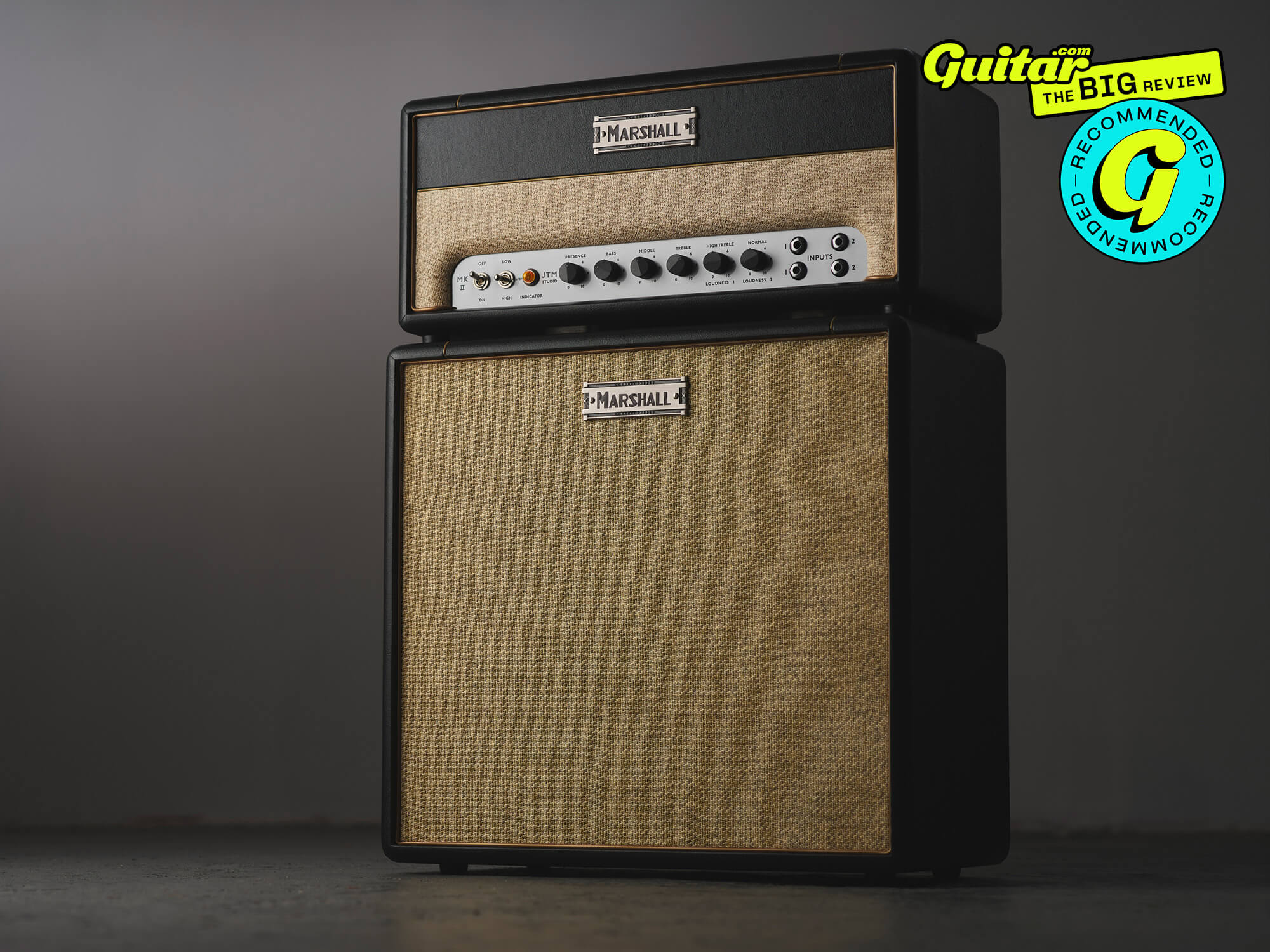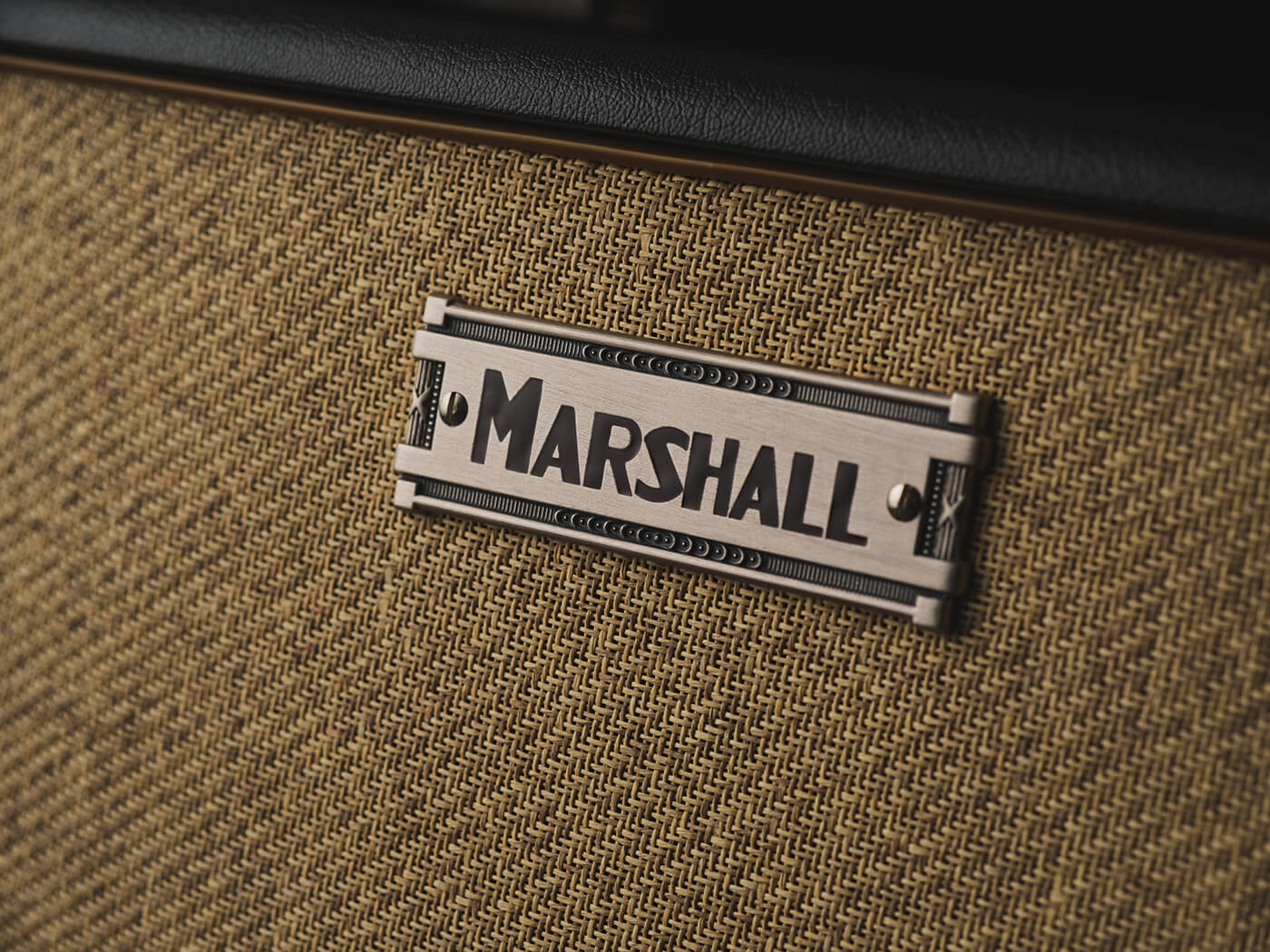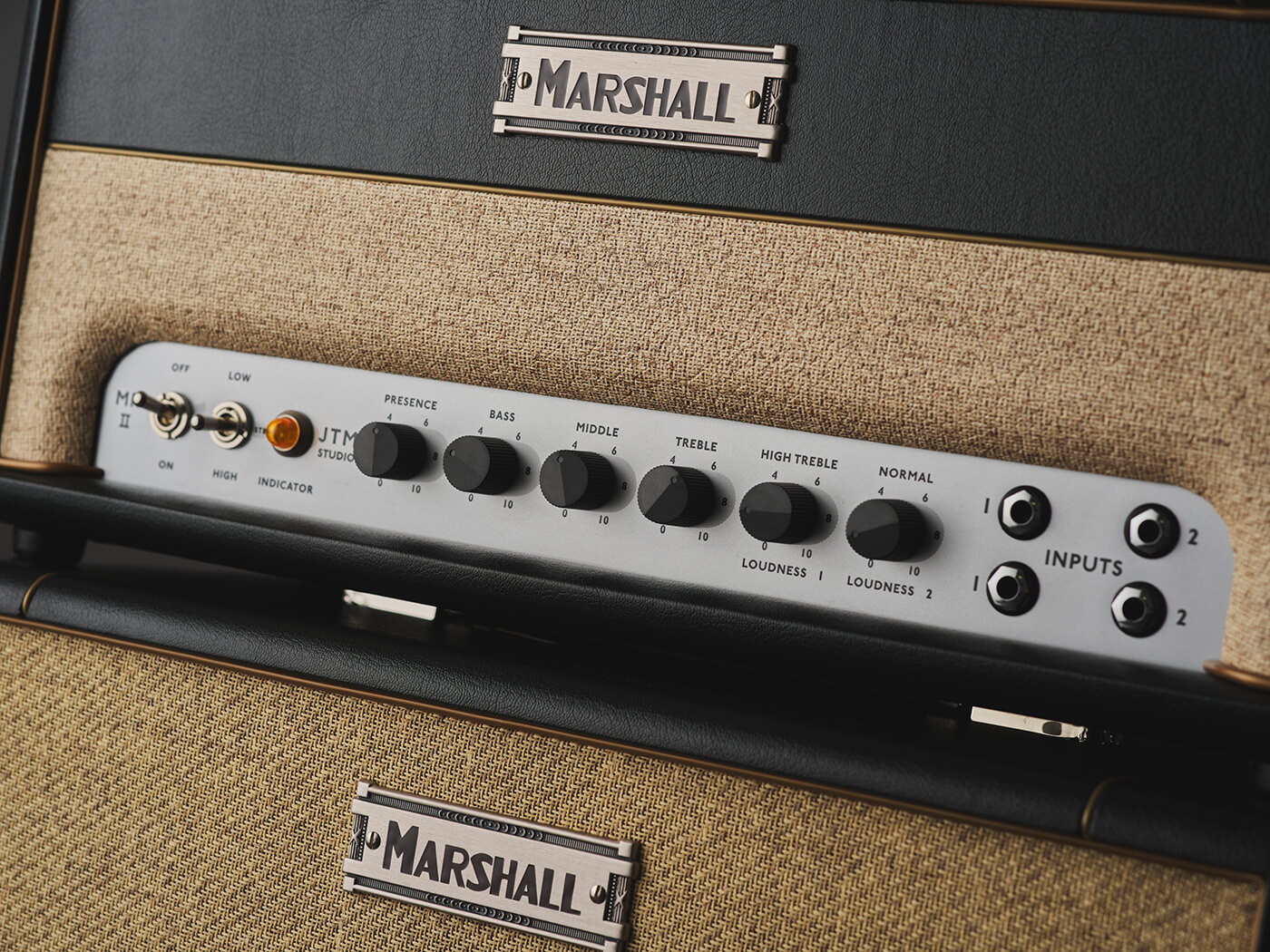Related Tags
Marshall ST20H JTM Studio: Iconic 60-year-old heritage gets a 2023 update… just don’t look at the US price
A certain amount of trepidation was felt when Britain’s legendary amp builder was recently acquired by a Swedish company. With the release of a brand new amplifier in 2023, were our fears justified?

Marshall ST20H JTM Studio. Image: Adam Gasson
Review Overview
Our rating
9
Our verdict
£1,349/$2,999 (with 2×12 Extension Cabinet), marshall.com
Earlier this year came striking news that the beloved UK institution that is Marshall Amplification was being bought by Swedish firm Zound Industries, a company with whom Marshall had recently collaborated to release a range of headphones and Bluetooth speakers. Though the Marshall family still retain a significant stake in the new company, it was of course understandable that nerves were a little frayed in anticipation of what the future held for the brand. Soon after the takeover, the new owners surprised everyone with the release of a brand new guitar amp: one that would provide modern day requirements such as an effects loop and the ability to switch between normal and low volumes, but also one that would firmly celebrate the brand’s history as it would be a update and reproduction of the very first Marshall amplifier – the James Terry Marshall (JTM).
It’s no exaggeration to say that the JTM is part of the very fabric of rock music and after its introduction in 1962 would shape the landscape of rock and blues. As influential as it was in the evolution of rock and blues guitar, its schematic was itself heavily influenced – to say the least – by Leo Fender’s Bassman circuit, the 5F6-A. Furthermore, its design wasn’t solely the work of Jim and Terry Marshall either – both Marshall employee Ken Bran and his ham radio engineer friend Dudley Craven were heavily involved in its design.
As is often the case, from inspiration comes innovation, and the more prominent differences between the tweed Bassman and the JTM45’s tone and overdrive characteristics can largely be attributed to the Marshall’s different output impedance (delivering nearly three times the negative feedback of the Bassman), the vastly different speakers used, and the cabinet architecture.

Still proudly hand-built in Bletchley, England, the ST20H’s construction is solid with an almost boutique vibe. Though its aesthetics are devoid of the iconic black and gold colour scheme, we are instead treated to a nostalgic nod to the early iterations of the JTM which featured fawn felt cloth and ‘coffin’ badges, termed as such due to Jim having bought them from a local funeral hardware store. The ST20H pays further homage to this era by possessing a 5881 power section, not KT66 power valves which came slightly later in the history of the JTM. Period-correct black knobs have also been employed but these may prove slightly irksome due to the rotation indicator being coloured black, thus rendering the settings difficult to read in low lighting. Marshall has not eschewed modernity entirely though as we have an effects loop and the uber-modern facility of being able to switch between two power modes, in this instance 5W and 20W.
Turning on the amp, and before we’ve even plugged in, we notice just how quiet it is. There’s little in the way of hiss or unpleasant grunts and groans; instead it feels primed and ready to be unleashed. Plugging in a single-coil loaded Fender Strat into the Normal Hi input with the EQ settings roughly halfway and volume at 11:00, we’re struck by just how much headroom we have, even on the 5w setting. Given the influence the Bassman had on the JTM it’s perhaps little surprise that clean sounds are more reminiscent of Fender than Marshall. Sure, it hasn’t got the crystal sparkle of a Deluxe Reverb but it soundly possesses the punchy power of a Bassman in the low mids, with an added warmth provided by the single Celestion G12M Creamback speaker housed in an upright cabinet. It’s an addictive sound and any chords featuring open strings sound expansive and harmonically decorous, devoid of the darker edge that we usually expect from say a JTM45 reissue. Yes, we’ve set the bass at a very low level which is par for the course for this channel, but when we add a little spring reverb and a smidge of tape delay through the effects loop, it further enhances the lush clean experience, especially as the effects loop has little to no negative effect on either volume or tone.

We fear the high treble input may be a tad harsh for our single-coil-loaded USA Strat but we are instead treated to a moderately driven Hendrix-esque tone. As this is a non-master volume amp, if we want the overdrive then we must turn up the volume, but our low-powered neck single coil isn’t really cutting it, so with this in mind we dig out our PAF-loaded Les Paul. Now we’re cooking! There’s a definite edge to proceedings now and the amp is practically daring us to turn it up, so who are we to refuse? The slight brashness we initially encounter is easily tamed and with the volume a 3:00 the power section is in full swing; quickly entering classic rock territory.
One of the great things about vintage four-input amps is the ability to jump the channels, which allows you to experience both simultaneously and blend to taste. This is where we can compensate for frequency shortcomings in each channel, and we find ourselves favouring the high treble channel but blending a little of the bass-heavy normal channel for the best results. We cannot help but dime both volumes though, and we are rewarded with a squashed chewy overdrive that borders on fuzz. Great fun for all the family!
There isn’t a great deal of difference in tone between the 5W and 20W settings, aside from the obvious increased headroom. We have to say though that even the 5W mode is barely usable at home volume levels, especially as we begin to push it into break-up. This amp is loud!

Over 60 years after its creation the JTM feels as relevant today as it did back then. We have lost count of the number of times in the studio where, when we’ve struggled to nail a particular sound, our JTM45 reissue is wheeled out and brought into the signal chain. It never fails to deliver. It’s not particularly versatile but what it does provide is those iconic sounds from the 60s and 70s which is exactly what many guitarists still enjoy trying to recreate even to this day. But this isn’t just for the old guys either. Even when recording for my own prog-metal band, when there’s a clean part or something that requires a more characterful clean, often a JTM45 model or profile will be employed.
It’s not all good news though; it’s US customers who are stung considerably hard on price here by a British-made amp. And that’s a shame, but the future not only looks safe in the hands of the new Marshall owners, it also looks promising. Long may they continue to innovate but more importantly, long may they continue to celebrate their heritage. The ST20H is just that – a celebration of the past in a modern package.
Like this? Try these
- PRS HDRX 20 £779
- Rift PLEXI 45 £2,199
- Fender ’59 Bassman £1,859
